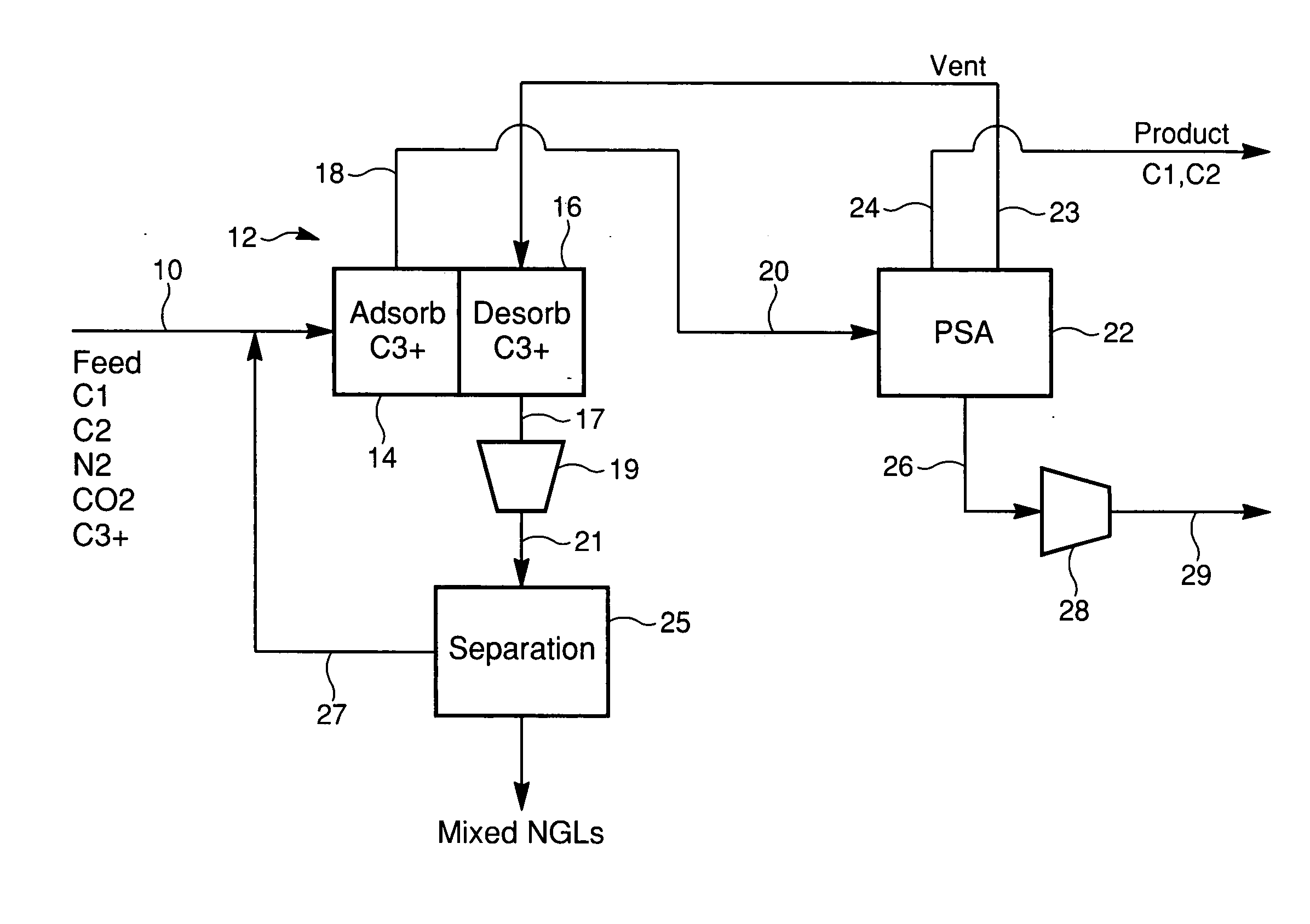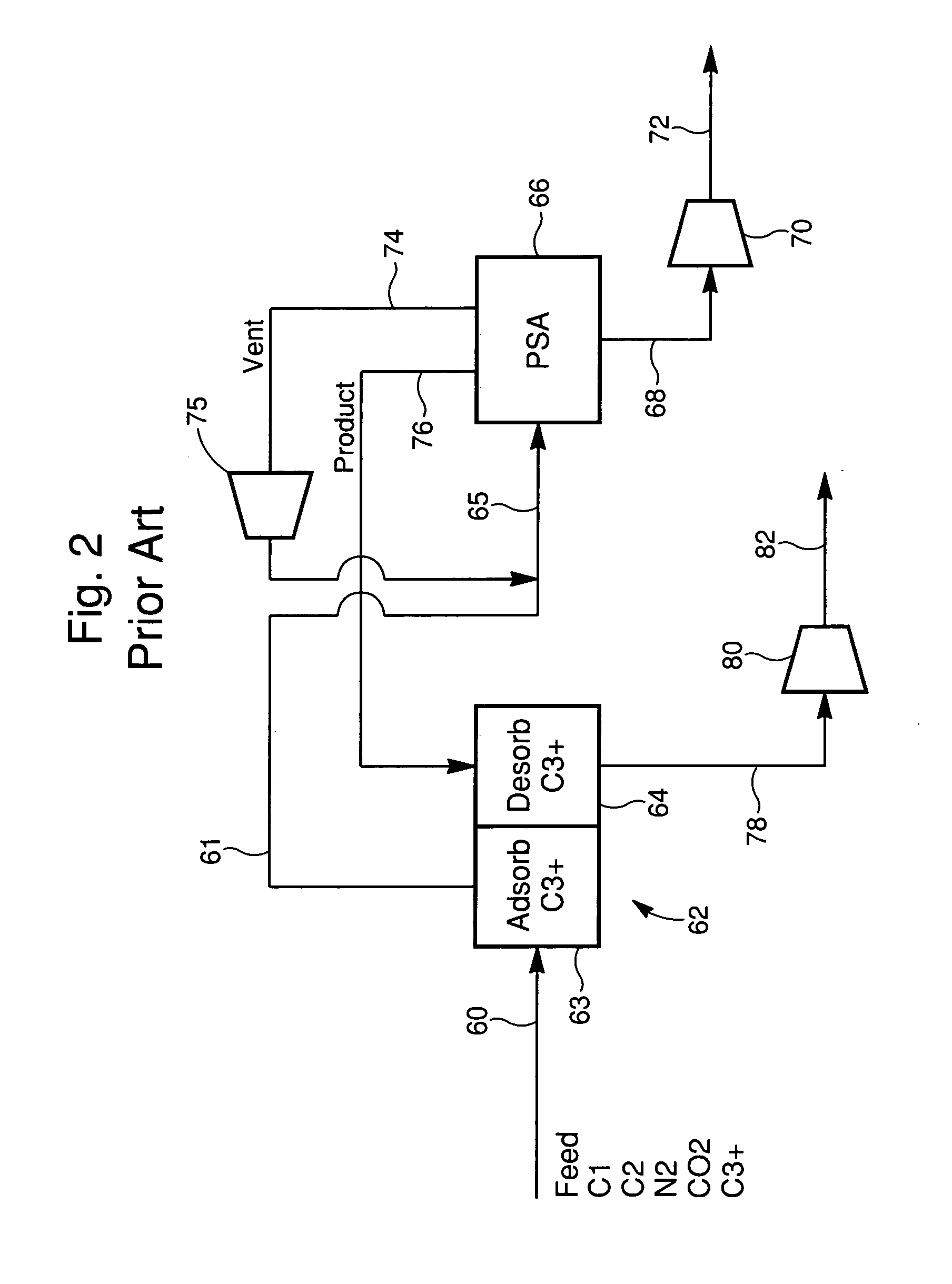Many of these reserves, however, have discounted
market potential, if they are marketable at all, due to the inability to cost effectively remove the nitrogen and carbon dioxide.
This trend could result in higher cost natural gas and possible supply shortages in the future.
As the U.S. reserves are produced and depleted, finding new, clean gas reserves involves more costly exploration efforts.
This usually involves off
shore exploration and / or deeper drilling onshore, both of which are expensive.
Moreover, unlike
crude oil, it is expensive to bring imports of natural gas into North America, therefore pricing of natural gas could be expected to rise forcing end users to seek
alternative fuels, such as oil and
coal, that are not as clean burning as gas.
The principal
disadvantage of the
fractional distillation and adsorption processes is that they remove the major component, methane, from the minor component, nitrogen, instead of the reverse.
Accordingly, cryogenic
processing is expensive to install and operate, limiting its application to a small segment of reserves.
Cryogenic technology is believed only capable of cost effectively purifying reserves, which exceed 50,000,000 standard cubic feet of gas per day.
Gas reserves that do not fit these criteria are rarely being purified.
The processes suggested under
paragraph (c) above are handicapped by an unsatisfactory degree of separation or by the use of very expensive materials.
The
moving bed process specifically disclosed in this patent is not practical and it does not provide a cost efficient method for the separation of nitrogen from natural gas in view of high equipment and maintenance costs and degradation of the adsorbent by attrition due to contact with the moving adsorbent particles.
Despite the advantageous aspects of adsorption processes, the adsorptive separation of nitrogen from methane has been found to be particularly difficult.
The
primary problem is in finding an adsorbent that has sufficient selectivity for nitrogen over methane in order to provide a commercially viable process.
However, this patent is silent as to specifics of the process, such as steps for treating the
waste gas, nor is there disclosure of a high overall
system recovery.
These systems are widely used in industry with over 600 large units positioned in natural gas service in the U.S. The
amine solvent suppliers compete vigorously and the amines used range from DEA to
specialty formulations allowing smaller equipment and operating costs while incurring a higher
solvent cost.
These systems are well accepted although they are not very easy to operate.
Keeping the amine solvents clean and equipment free of
corrosion can be an issue.
Another
disadvantage to using aqueous amines is that the natural gas product of an aqueous amine
system is water saturated.
Accordingly,
dehydration typically using glycol absorption would be required on the product stream after the carbon dioxide has been removed adding operational and capital costs to the purification process.
An apparent
disadvantage of using Molecular Gate®
titanium silicate sieves in processes for the removal of nitrogen from natural gas is that approximately one-half of the
propane and all the
butane and heavier
hydrocarbon components are co-adsorbed with the nitrogen.
More recent designs use refrigerated oil but overall this technology is considered outdated.
This expansion causes a substantial drop in the temperature of the natural gas stream.
These plants are expensive, especially for recompression.
All of the routes for liquid
recovery are fairly expensive in capital and require considerable power for either
refrigeration or recompression.
The relationship in value of natural gas to natural gas liquids is complex and the prices, while related, do fluctuate.
 Login to View More
Login to View More 


